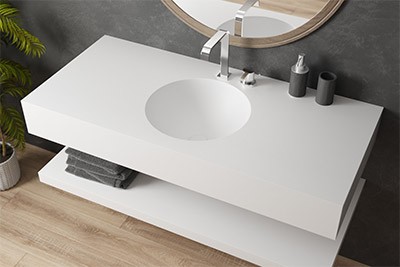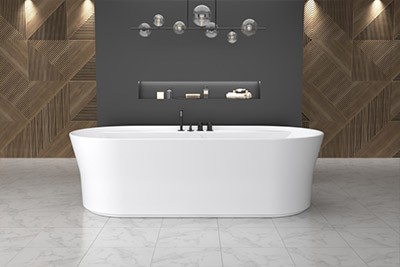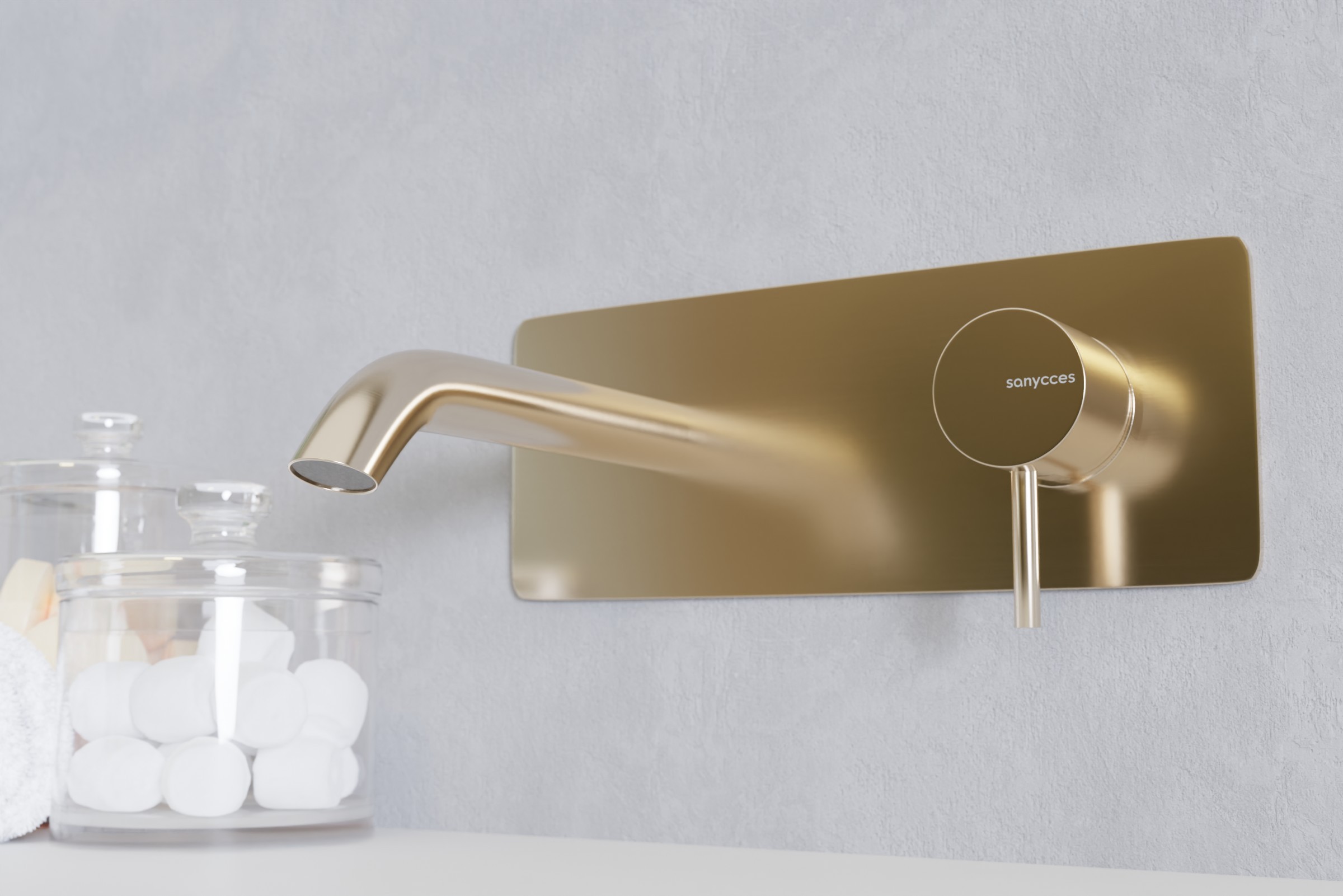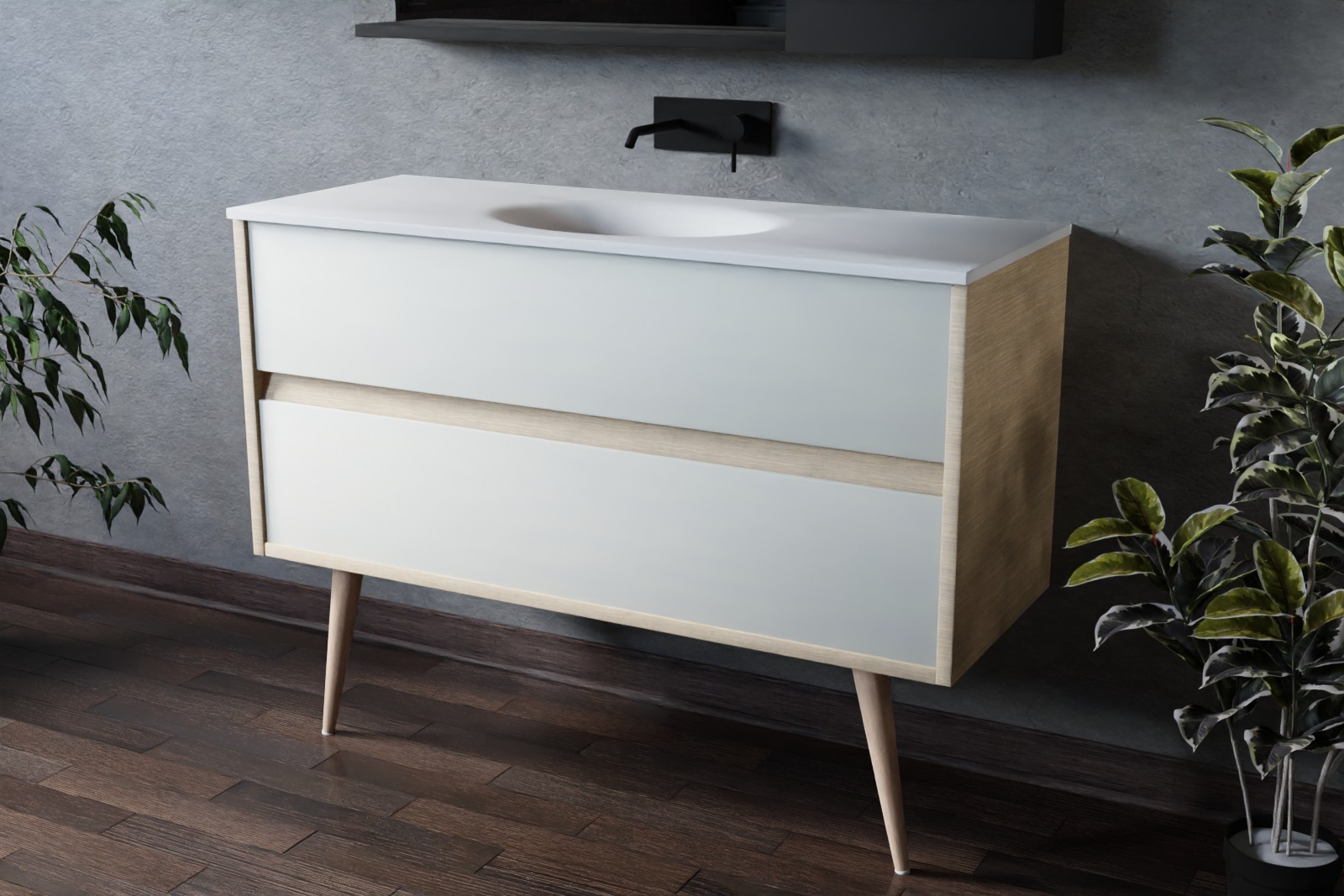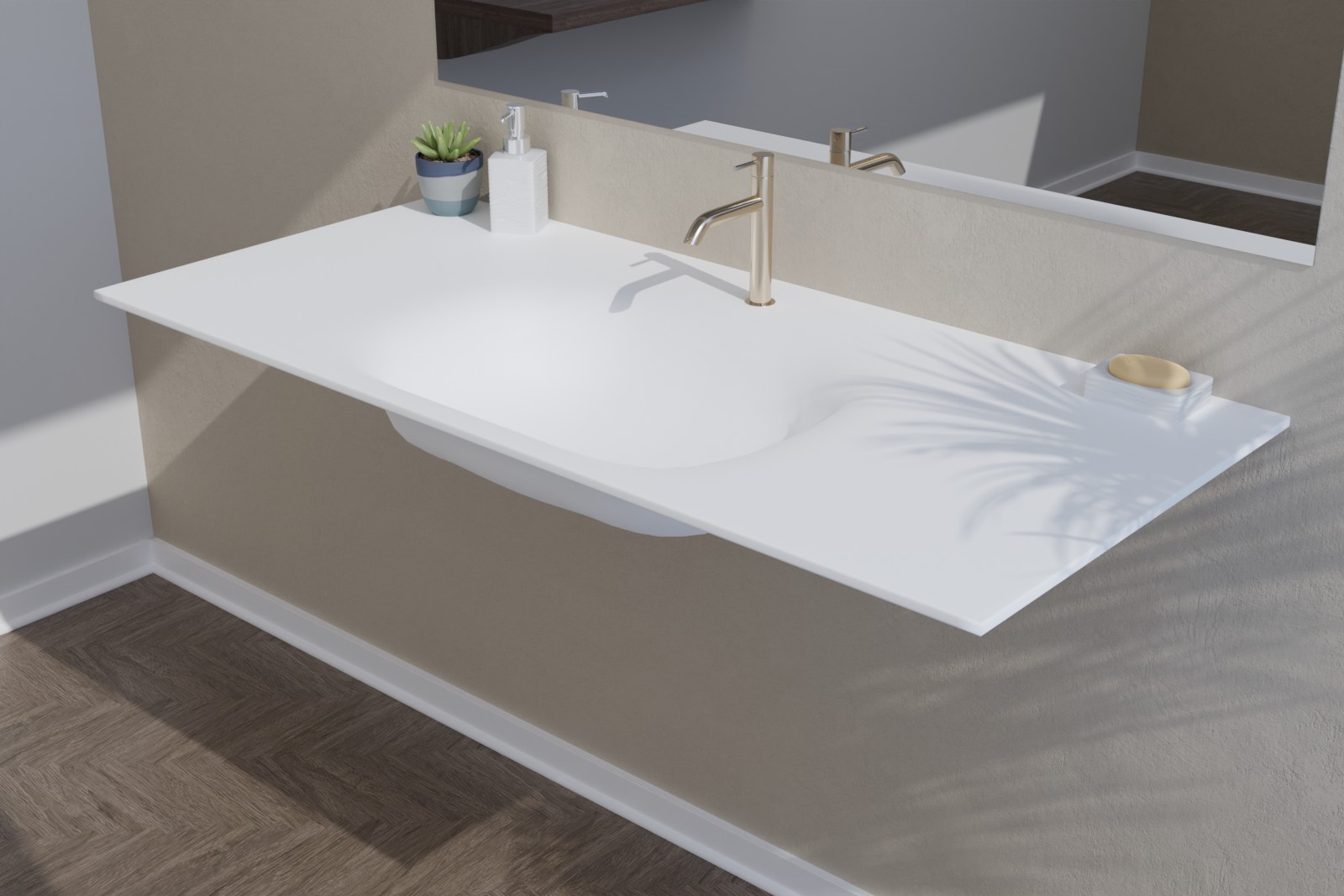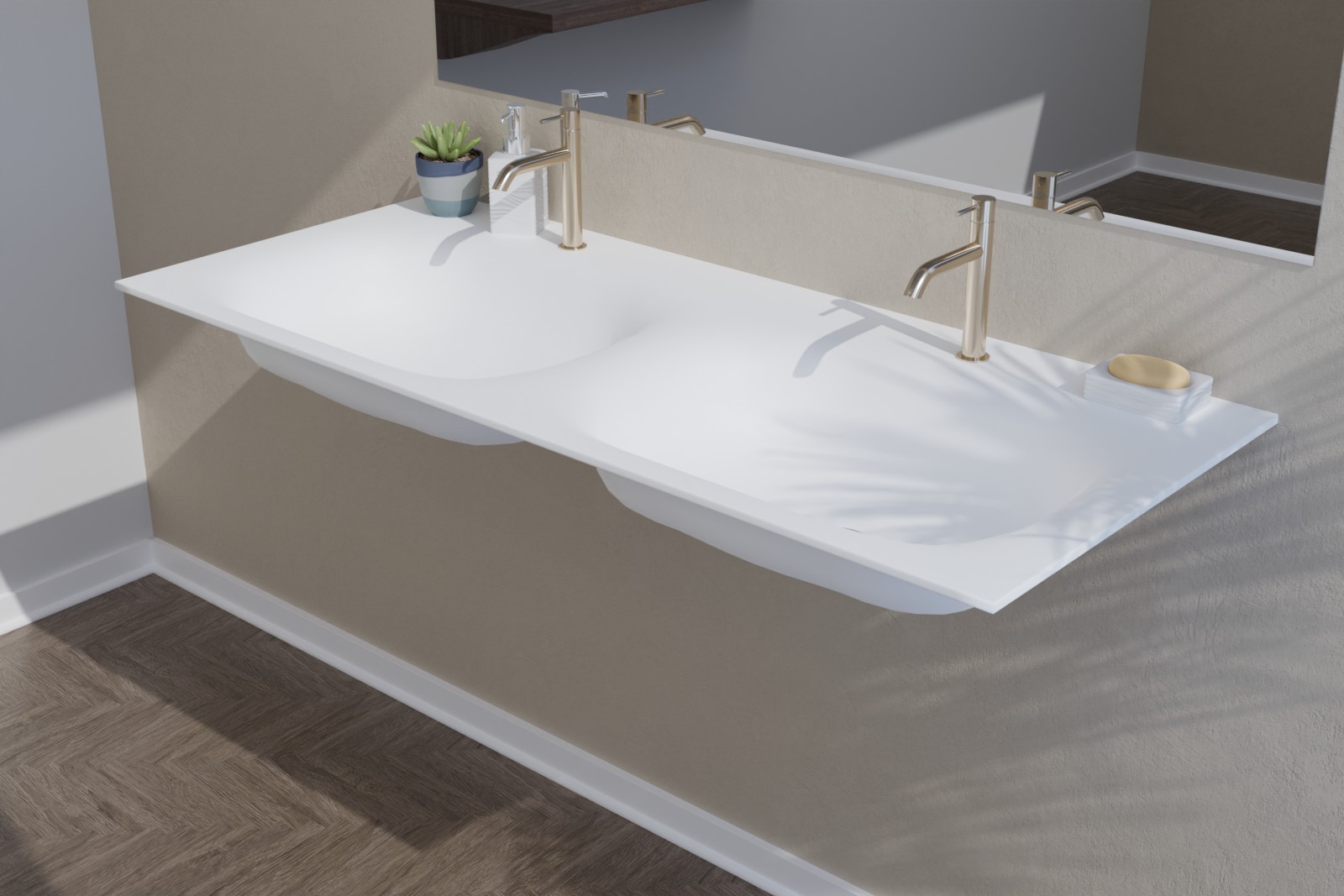Solid surface Corian® is, as you probably know, a renewable material, but how and why is it possible to erase all the traces left by time and use? This is what we will discuss in this article.
To start with a little technical and chemical information, Corian® is made up of approximately 1/3 acrylic resin (also known as PolyMethyl MethAcrylate or PMMA) and 2/3 natural minerals. Thanks to its composition, Corian® is non-porous and as dense at the core as it is on the surface, which allows the surface to be sanded down to remove scratches and small scuffs. It is normal for the surface to develop a patina over time with micro-scratches due to regular use on the worktop, basin or washbasin. It is therefore important to maintain it well and to polish it if you want it to look like new again and to remove stains, burn marks or scratches.
.png)
Renovating your Corian® surface
We recommend using an electric sander of the eccentric type which will make even circular movements and will allow you, with little or no experience, to have a satisfactory result. Otherwise, a conventional sanding block will suffice, although you will need to be more meticulous and patient. We also advise you to contact a professional directly if your Solid Surface product is coloured or white with a glossy finish, as sanding is quite complex and requires experience. Of course, you can try it yourself! To achieve a homogeneous whole, plan to re-sand the whole surface and not just the part to be restored so that there is no difference in colour afterwards.
For the finish it is simple, the finer you sand, the shinier the appearance.
For a matt finish use 120 grit sandpaper, then 240 grit sandpaper, if you don't have 240 grit you can use 180 to 280 grit sandpaper, then 320 grit sandpaper, then finally use 360 grit sandpaper with water and you have a matt finish.
Then for a more satin finish, which is the most commonly used finish for washbasins and bathrooms. Repeat the operation described above for the matt finish, making sure you skip the 360 paper step and go straight to 400, 500 and finally the 1000 water-based finish.
Finally, the gloss finish is the one that requires the most sanding and therefore the most complexity. As before, you can do a satin finish and finally finish with 2000 and 4000.
It is also possible to use a polishing product to improve the finished look. In this case, use a polishing machine set to low speed and choose a polish that is compatible with Corian®. Then, use circular movements over the entire surface to ensure that there is no difference in gloss.
Remember that the shinier the finish, the more scratches will be visible. We recommend the Krion® kit, which will enable you to renovate your washbasin in either Corian® or Krion®.
.png)
Maintaining your product in Solid surface
Of course, following your restoration, it is essential to maintain your Corian® surface. To do this, simply use a sponge or cloth dampened with a mild detergent and rub moderately to remove all stains from your surface. If the stain persists, do not hesitate to use a specialised product for the maintenance of the Solid surface.
-min.png)
Good practice
Good practice
Heat:
- Use a trivet or insulating mat when placing a hot dish or pan. As a thermoformable material, Solid surface reacts to heat and can mark with too high temperatures.
- Do not pour hot or boiling liquids directly into a Solid Surface Corian® sink without running cold water at the same time, as this may damage the sink or even crack it.
- Do not let your pan protrude above your Solid surface worktop, as the material could scorch from the heat.
Chemical or overly acidic products:
If a harmful product such as paint remover, oven cleaner, sink cleaner or even nail polish remover comes into contact with the Corian® solid surface, rinse it off immediately and thoroughly with soap and water so that your Corian® surface is not damaged.
Scratches and scuffs:
All materials that are used to make worktops and vanity tops will eventually scratch with daily use, Corian® is no exception. To avoid this, here are some best practices:
- Do not cut directly on your Corian® surface, as this can cause nicks that are difficult to repair.
- Scratches and scuffs are more visible on a dark, coloured colour than on a light, textured colour.
As you can see, Corian® is a material that regenerates easily. Most damage, including major impacts and cracks, can be repaired and the Solid Surface Corian® surface can be made to look like new again.


